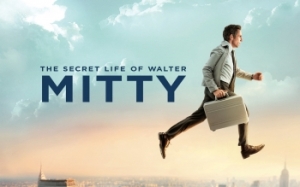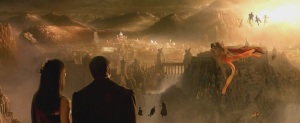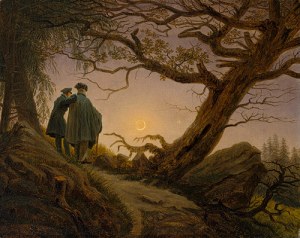Title: Girl, Interrupted
Year: 1999
Writers: Susanna Kaysen (book), James Mangold (screenplay), Lisa Loomer (screenplay) and Anna Hamilton Phelan (screenplay),
Director: James Mangold
Actors: Winona Ryder (Susanna), Angelina Jolie (Lisa), Clea DuVall (Georgina), Elisabeth Moss (Polly), Whoopi Goldberg (Valerie) and Brittany Murphy (Daisy).
Movie Summary: This film is based on the book and true story by Susanna Kaysen. Set in the 1960’s, it is the story of a depressed and directionless young woman named Susanna (Winona Ryder). After a suicide attempt, Susanna is sent to a mental institution named Claymore. While there, she befriends a group of women in her ward. Lisa (Angelina Jolie) becomes her best friend, but it soon creates many problems. Lisa (Jolie) is a manipulative and charismatic young woman who is seemingly the “puppet master” of the other girls. Susanna struggles through many hard experiences, thoughts and feelings during her pursuit to “find herself”.
Acting and Acting Style: Three prominent actors in this film are Angelina Jolie (Lisa), Winona Ryder (Susanna) and Brittany Murphy (Daisy).
Winona Ryder’s first significant role was in Tim Burton’s Beetlejuice (1988). In Girl Interrupted (1999), Ryder is character acting. Her portrayal of Susanna Kaysen is realistic yet specific to the movie. The following clip demonstrates her character acting:
Brittany Murphy was also character acting in Girl, Interrupted (1999). Her earlier roles, such as in Clueless (1995) consisted of very different personalities and characters. Murphy plays a sexually abused and severely disturbed girl in this role:
Angelina Jolie’s performance earned her the 2000 Academy Award for Best Supporting Actress. Although her first film was in 1982, her first breakthrough role did not come until the 1990’s, when she starred in the television film Gia (1998). Gia (1998) landed her a Golden Globe for Best Actress. Up until this point, she had primarily been a character actor. After her performance in Girl, Interrupted (1999), Jolie achieved Star status. In Girl, Interrupted (1999) Jolie was a character actor or even a wildcard. I would say this because Jolie is not yet totally recognizable and yet she has already established that she can play a variety of roles (Goodykoontz & Jacobs, 2011, 3.4). The following clip shows Jolie’s portrayal of Lisa and her realistic portrayal as a manipulator and a bully:
I would say that Angelina Jolie is definitely a Star, which is a strong personality character (Goodykoontz & Jacobs, 2011, 3.4). It is difficult to define and yet her personality is what makes her movies so successful. Jolie has also starred in several action movies, such as Salt (2010):
Jolie is often typecast as the sexy “tough girl”, as seen in these films. Other action films that show this personality include: Gone In Sixty Seconds (2000), Tomb Raider (2001), Mr. & Mrs. Smith (2005) and The Tourist (2010).
Resources:
Brittany Murphy In Girl, Interrupted [Pills Addiction] [Video file]. (n.d.). Retrieved from https://www.youtube.com/watch?v=i7jv6qNS2t4
Girl, Interrupted (1999) – IMDb. (n.d.). Retrieved July 8, 2014, from http://www.imdb.com/title/tt0172493/?ref_=ttco_co_tt
Girl Intterupted ( what’s your diagnonsense?! ) [Video file]. (n.d.). Retrieved from https://www.youtube.com/watch?v=164rFFVL9cI
Girl Interrupted – Strong Scene [Video file]. (n.d.). Retrieved from https://www.youtube.com/watch?v=MEtcP9Tf0YE
Goodykoontz, B., & Jacobs, C. P. (2011). Film: From watching to seeing. San Diego, CA: Bridgepoint Education, Inc.
Mangold, J. (Director). (1999). Girl, interrupted [Motion picture]. USA: Columbia Pictures.
Salt Movie Clip “Missile Launcher” [Video file]. (n.d.). Retrieved from https://www.youtube.com/watch?v=rcoejPfV4x4




